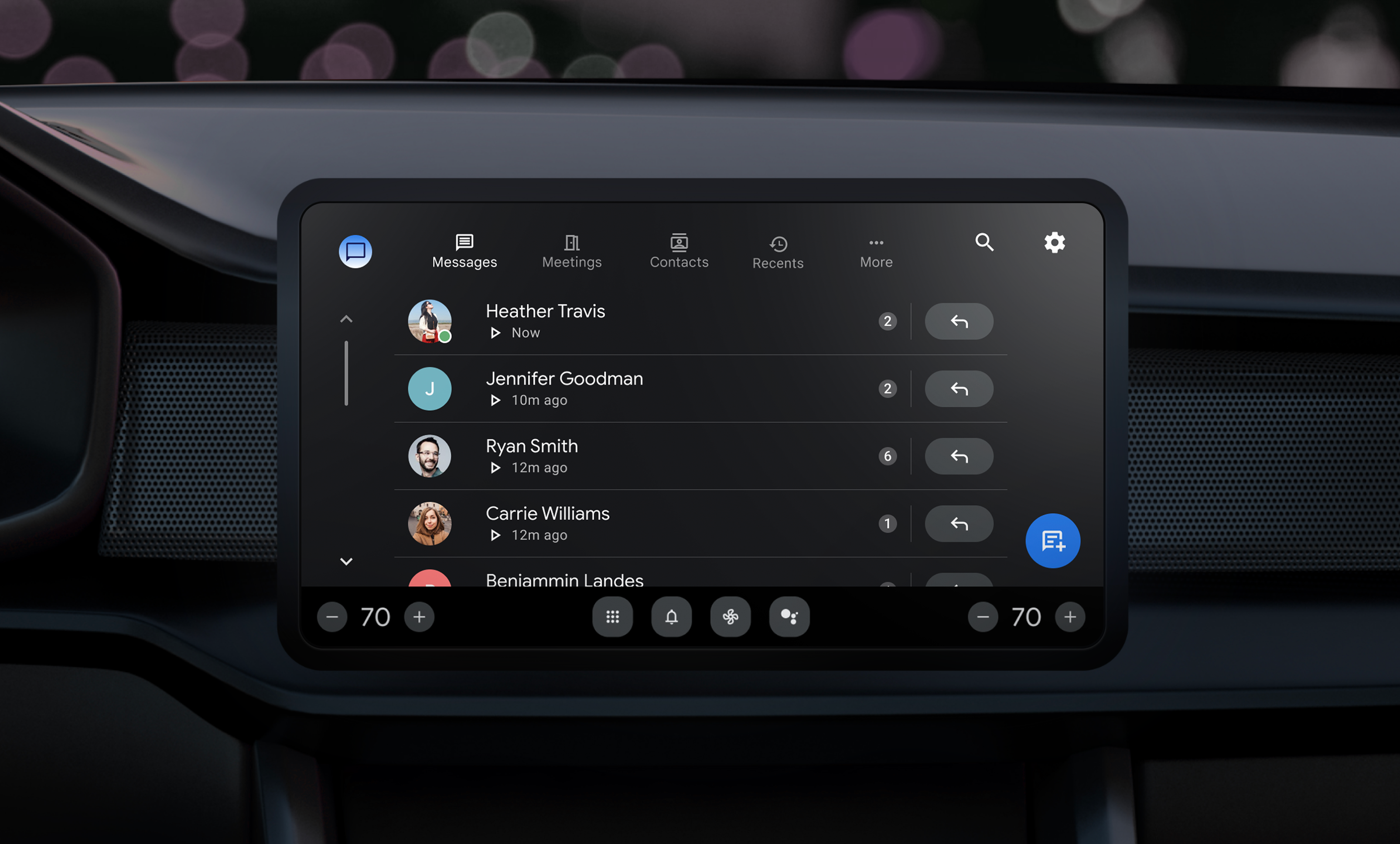Android for Cars lets you create calling and messaging experiences that drivers can access from their car screens or through voice while driving.

Calling experiences built with the templates in the Android for Cars App Library are driving-optimized, so they help drivers communicate while staying focused on the road. Similarly, the messaging UI in Android Auto uses easy-to-read notifications and voice-based messaging to minimize off-road glances.
Get started
To learn how to design apps with the templates in the Android for Cars App Library, see Build apps with templates.
Templates especially relevant for calling apps include:
Calling
The Android for Cars App Library lets you create apps with lists or grids of contacts that users can tap to initiate VoIP calls. Calls are smoothly integrated with the Android Auto calling experience using the Android CallsManager APIs, assuming you have implemented the Telecom APIs.
Messaging
Android Auto's messaging experience consists of messaging notifications, and in-app conversation history. Your app can post incoming message notifications, and users can choose when to respond. Your app can also implement templates for users to read and reply to conversations in your app. Options to play the message aloud and dictate an answer make it easier for users to respond while driving.
Messaging notifications
Because the UI already exists within Android Auto, there is no UI work needed on the app end. The only design considerations relate to:
- App icon. Supply an app icon that will be easy for users to identify at a small size, in a badge on a notification.
- Message ordering. Make sure your app’s messages are appropriately grouped and sequentially ordered.
Messaging app
The Android for Cars App Library lets you create apps with lists of conversations. These conversations should match what a user sees in your mobile app experience, so they can easily find, read, and reply to those conversations. Unlike other templates, Conversation Item templates have less flexibility, and require specific pieces of information to be provided. With this, users will be able to easily read and reply to conversations using the Google Assistant.